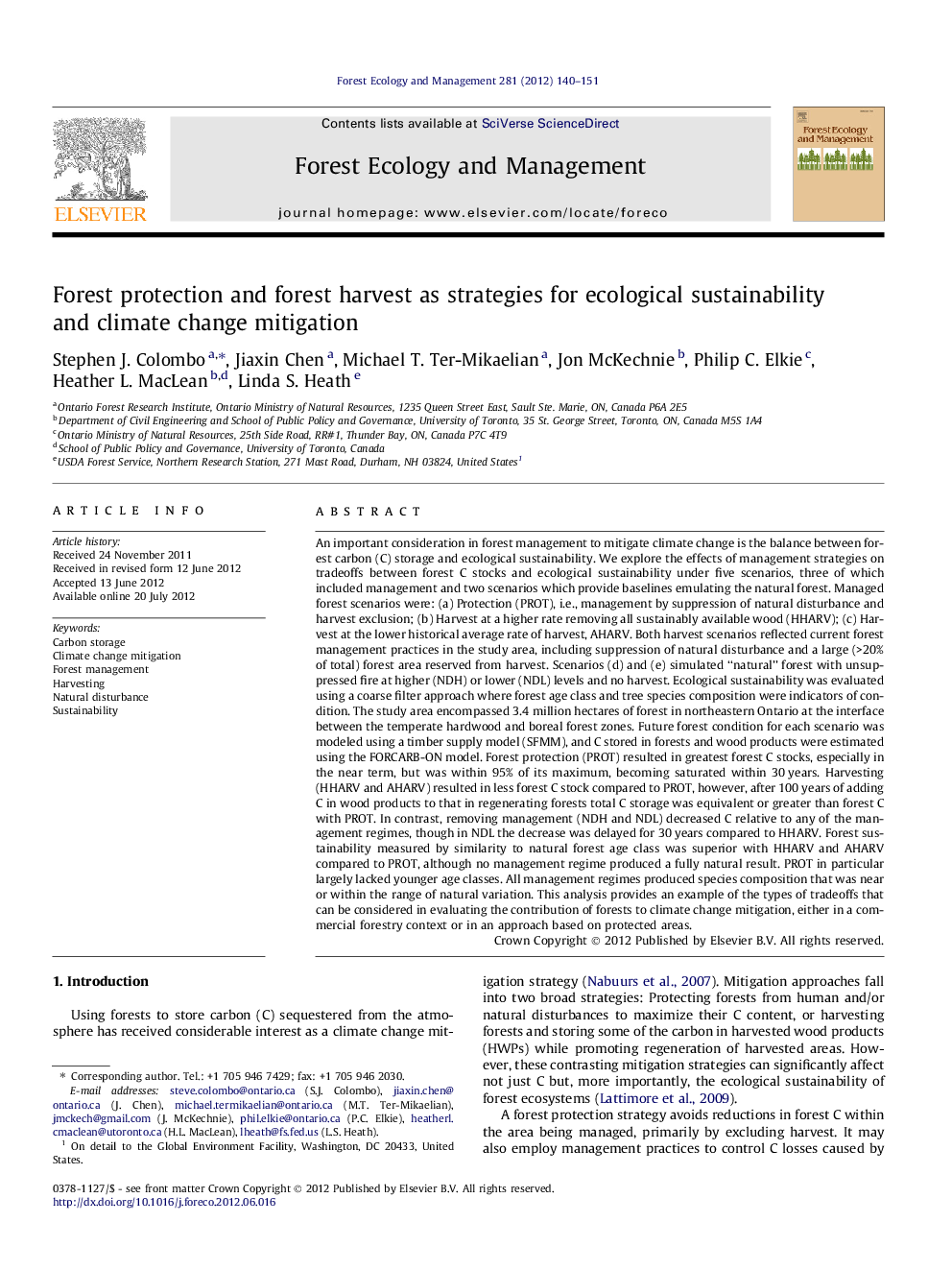| کد مقاله | کد نشریه | سال انتشار | مقاله انگلیسی | نسخه تمام متن |
|---|---|---|---|---|
| 87136 | 159233 | 2012 | 12 صفحه PDF | دانلود رایگان |

An important consideration in forest management to mitigate climate change is the balance between forest carbon (C) storage and ecological sustainability. We explore the effects of management strategies on tradeoffs between forest C stocks and ecological sustainability under five scenarios, three of which included management and two scenarios which provide baselines emulating the natural forest. Managed forest scenarios were: (a) Protection (PROT), i.e., management by suppression of natural disturbance and harvest exclusion; (b) Harvest at a higher rate removing all sustainably available wood (HHARV); (c) Harvest at the lower historical average rate of harvest, AHARV. Both harvest scenarios reflected current forest management practices in the study area, including suppression of natural disturbance and a large (>20% of total) forest area reserved from harvest. Scenarios (d) and (e) simulated “natural” forest with unsuppressed fire at higher (NDH) or lower (NDL) levels and no harvest. Ecological sustainability was evaluated using a coarse filter approach where forest age class and tree species composition were indicators of condition. The study area encompassed 3.4 million hectares of forest in northeastern Ontario at the interface between the temperate hardwood and boreal forest zones. Future forest condition for each scenario was modeled using a timber supply model (SFMM), and C stored in forests and wood products were estimated using the FORCARB-ON model. Forest protection (PROT) resulted in greatest forest C stocks, especially in the near term, but was within 95% of its maximum, becoming saturated within 30 years. Harvesting (HHARV and AHARV) resulted in less forest C stock compared to PROT, however, after 100 years of adding C in wood products to that in regenerating forests total C storage was equivalent or greater than forest C with PROT. In contrast, removing management (NDH and NDL) decreased C relative to any of the management regimes, though in NDL the decrease was delayed for 30 years compared to HHARV. Forest sustainability measured by similarity to natural forest age class was superior with HHARV and AHARV compared to PROT, although no management regime produced a fully natural result. PROT in particular largely lacked younger age classes. All management regimes produced species composition that was near or within the range of natural variation. This analysis provides an example of the types of tradeoffs that can be considered in evaluating the contribution of forests to climate change mitigation, either in a commercial forestry context or in an approach based on protected areas.
► We model C for harvest/no harvest in disturbance-prone forest with suppressed fire.
► Ecological sustainability was assessed based on forest age and species composition.
► All management regimes resulted in more C than in the natural forest.
► Without some disturbance a less natural age structure developed, with high forest C.
► A mix of harvest/reserved forest yielded moderate C and a more natural structure.
Journal: Forest Ecology and Management - Volume 281, 1 October 2012, Pages 140–151